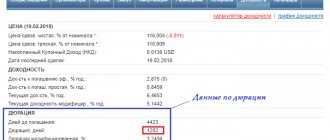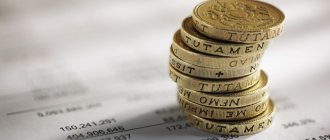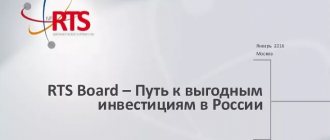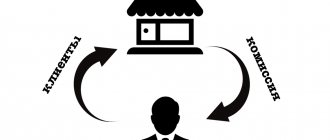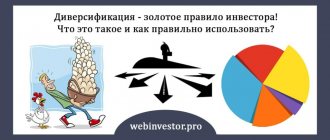Derivatives are derivative financial instruments. They are derivatives because they are based on some other asset. The derivatives themselves are dummies, their value is determined by the price of the underlying asset - a product, a security, a currency, a debt obligation - that is, what they are derived from. What are derivatives used for? Their first purpose is risk hedging, that is, risk redistribution, insurance. All derivative transactions are forward-looking. The safety net is that you freeze a certain, already familiar and, in principle, like situation today in order to apply it in an unreliable tomorrow.
The second meaning of derivatives is a tool for speculation.
The main types of derivatives are:
- forwards (futures);
- options;
- swaps.
What are derivatives?
First, let's figure out what derivatives are in general. In simple terms, a derivative (from the English “derivative”) is an agreement (contract) for the supply of a certain product on a certain date for an agreed amount. For example, an agreement may be concluded that the supplier will sell steel worth 2 million rubles to the plant in 3 months. Or that a trader will buy 100 shares of Apple in a week for $200 each.
The terms of delivery are called “contract specifications”. The product that is used in the contract is called the “underlying asset”. The underlying asset can be anything from stocks and commodities to interest rates in the economy.
Derivatives are called financial derivatives because they cannot stand on their own. They act as a superstructure over the underlying assets. Their value is tied to the price of the asset itself.
The derivatives market is also called a derivatives market, since the delivery of the underlying asset occurs on a certain date (term).
The main condition that makes a derivative a derivative is the immutability of the price specified in the contract. So, if a plant has agreed with a supplier to purchase a certain amount of steel for 3 million rubles in 3 months, then, regardless of changes in prices on the world steel market, the transaction will be executed at the agreed price.
Thus, a derivative allows you to fix the value of an asset for a certain period. Therefore, it is used to protect against sudden changes in prices for raw materials or products.
Moreover, the derivative itself is the same security as, say, a stock or bond, and its price changes depending on the value of the underlying asset. For example, if an option (a type of derivative) allows you to buy an Apple share for $150, while the share itself is currently worth $200, then the owner of the option can sell it for more than the owner of an option that would buy Apple shares for $180.
An example from everyday life
Despite the fact that derivatives are considered a derivative financial instrument, they are actually actively used in everyday life.
For example, if you pre-ordered a car at a dealership, then you actually entered into a futures transaction with the dealer (futures are also a type of derivatives). So, you will be sure that you will buy a car at the stated price, even if the dealer delivers cars of the same brand, but more expensive, on the same day. And the dealer will be sure that you will buy a car from him and it will not hang in the salon like a dead weight. In this case, prepayment acts as a guarantor that the transaction will be executed.
Also, derivatives in their essence are preliminary agreements for the purchase and sale of apartments, prepaid orders in online stores, gift certificates, etc.
What are the advantages of derivatives?
The derivatives market is attractive to investors and has a number of advantages over other financial instruments.
Among the advantages of derivatives as a tool for making profit, it is worth noting the following:
- Derivative financial instruments have a relatively low barrier to entry into the market and make it possible to start with minimal amounts.
- The ability to make a profit even in a declining market.
- The ability to make greater profits and get them faster than from owning shares.
- Savings on transaction costs. For example, an investor does not need to pay for the storage of derivatives, while brokerage commissions for such contracts are also very low and can amount to several rubles.
How did derivatives come about?
As a financial instrument, derivatives originated in the 17th century in Japan. Between harvests, peasants exchanged empty rice baskets, receiving payment now but committing to supply a certain amount of rice once it was ripe.
The guarantor of the execution of the transaction was that same basket. The exchange of baskets took place in specially designated places - prototypes of modern exchanges (although at that time it was more reminiscent of a classic bazaar). Sellers dumped or inflated the cost of future harvests, bargained with buyers and thus formed the local price of rice.
Trader Homma Munehisa began drawing charts and analyzing them in an attempt to predict price movements. This is how Japanese candlesticks and technical analysis appeared.
Futures and options appeared as direct investment instruments in the United States. In Chicago, in the mid-19th century, the first commodity exchange was organized - the Chicago Board of Trade - where farmers could sell their future harvest: they entered into futures contracts with buyers for the delivery of the crop at a certain time. Everything in the contracts was standardized: quantity, quality of grain, time and place of delivery. By selling futures, farmers could feed their families all year round and not depend on weather, prices and other unpredictable factors. And buyers received constant supplies of grain and could plan further production.
Derivatives trading at the Chicago Board of Trade
Futures and options trading began to gain momentum in the 20s of the 20th century, when farmers began to speculate in contracts, reselling unprofitable ones and buying more expensive ones. Then professional traders came to the exchange, who very quickly saw the potential of the new instrument and began to actively “promote” it.
The “range” of underlying assets has expanded – the number of derivatives includes futures contracts and options on metals, gold, shares, and other commodities. Then more complex products appeared - currency swaps, credit default swaps, swaptions, CFDs, composite instruments, etc.
The purchaser of a derivative does not always aim to receive the goods via contact - for a speculator, the change in the price of the derivative instrument itself is more important. This is how options without delivery of the underlying asset appeared. The main purpose of such a tool is speculation. When the option expires, one of the parties simply receives money, and the other loses. At the same time, the option can be resold many times, as a result, the parties may not be the same traders who launched this very option.
I also recommend reading:
Coca-Cola shares - company overview. How to buy shares and make money?
The name Coca-Cola is associated with the drink of the same name, but in addition to it, the company’s arsenal includes a whole range of drinks, syrups and concentrates of various […]
Symmetric and asymmetric derivatives
Based on the type of income, derivatives can be divided into symmetrical and asymmetrical. In the case of symmetrical instruments, both parties to the contract bear the same risk. A simple way to illustrate this is with a stock futures contract. In this situation, one of the parties to the transaction undertakes to purchase a certain number of shares at a conditional price of $100, and the other party must sell them at this price. If the price at the time of execution of the futures was $120, then the buyer made a profit of $20 per contract, and the seller suffered the same loss. It will be transferred to the buyer.
It is easy to guess that asymmetric instruments impose obligations on certain behavior of only one of the parties. The other party receives a right that it may or may not use. The buyer may at any time refuse to complete a transaction to purchase an asset.
Let's say the underlying asset was worth $150 and a premium of $20 was paid for the right to buy it in the future at that price. In the future, the asset now costs $250 - the buyer exercises the right to buy it for $150 and earns $100. The second party remained at a loss, but received a premium, making the distribution asymmetrical.
Why are derivatives needed?
The original purpose of derivatives is to hedge risks. An example of how the defense mechanism works is partially described above. Below is a clear example to better understand why derivatives are needed.
Let's say the owner of a plant needs steel in a certain quantity to load his capacity. At current prices this is 3 million rubles. But now the plant doesn’t have that kind of money. However, steel prices are expected to rise in the future. Therefore, the owner of the plant agrees with the steel supplier that in 6 months he will buy 100 tons of steel from him for 3 million rubles and pay a guarantee amount of 10% of the contract value. If after 6 months the cost of steel increases, say, to 4 million rubles, then the owner of the plant will exercise his option and receive steel for 3 million rubles. If steel prices fall and the same volume can be purchased for 2.5 million rubles, then the owner of the plant will refuse the contract. Having lost 300 thousand rubles, he will save half a million.
In addition, derivatives allow you to achieve other goals not related to risk hedging:
- receive income from the execution of the contract;
- speculate on the difference in the price of the contract itself;
- make money on arbitrage - simultaneous conclusion of multidirectional transactions in different markets;
- make a profit due to changes in the price of the underlying asset - due to the high leverage already “built into” the instrument, you can make big money even on small movements in the asset price;
- diversify your investments and do not depend on one asset class;
- minimize taxes, for example, through the use of stock swaps;
Different types of derivatives are used depending on different purposes. Therefore, an investor needs to carefully select a specific instrument for his tasks.
Forward - we play it safe
Let's imagine that I.
I produce carrots. Now, roughly speaking, it’s March, I’m doing sowing. Prices - well, let it be 60 rubles per kilogram of carrots. I like this price: I cover my costs and even make a little profit. But now there is a crisis around, and I don’t know what will happen in August, when I harvest and intend to sell my wonderful carrots. The price may be 70 rubles per kilo - and I will be a winner. The price can be 50 rubles per kilo - and I’m a big loser. Well, okay, I agree not to get 70 rubles, which is not necessarily good for me, but to definitely get my 60 rubles, which suits me. Just to avoid getting just 50, which I can’t live on. Therefore, I am looking for some person who, already now, in March, is interested in buying carrots from me in August. Let's say it will be "Lena Rabbit Production". Raises rabbits en masse. Lena also doesn’t know what will happen in August. If the price in August is 50 rubles per kg of carrots, she will buy more carrots for the rabbits, they will grow fat, produce a lot of valuable fur and 3-4 kg of dietary meat. If the price is 70 rubles per kg of carrots, then Lena will not buy many carrots and half of the rabbits will die a terrible death of starvation. But if the price is 60 rubles per kg of carrots, that’s normal.
Hurray, we found each other. Our interests coincided. I agree to sell my carrots in August for 60 rubles, and Lena agrees to buy my carrots for 60 rubles. We both realize that, perhaps, in August one of us could conclude an agreement on better terms for ourselves. But we are also aware that someone could have concluded an agreement in August on much worse terms. Nobody wants to lose a lot. So, we enter into a forward contract in March to hedge against August risks. The goods and payment will also be transferred in August.
In cubes and arrows, what we agreed on looks like this:
In direct time, the entire agreement looks like this:
There are deliverable and non-deliverable forwards. A delivery forward is the example discussed above - when the manufacturer (in this case, the seller better illustrates this) actually hedges its risks and actually then hands over a completely real carrot.
A non-deliverable forward is purely a speculation tool. There are no producers of real carrots here, no carrots are transferred anywhere. You can, for example, make a non-deliverable forward on a currency. In this case, in March I will conclude an agreement with Lena that in August I will sell her 1 dollar for 24 rubles. And I will have to sell her 1 dollar for 24 rubles in August. And if in August 1 dollar costs 76 rubles, then guess which of us screwed up and received less on the forward than he could without it, and who won, and received more on the forward than he could without it.
For a snack: what is the difference between forward and futures? Yes, none. Only a future is a forward contract concluded on an exchange. And a forward is a futures, but outside the exchange.
Types of derivatives
1. There are several classifications of financial derivatives. One of the main ones is that the following derivatives are distinguished based on the type of underlying asset:
- for real goods - precious metals, steel, wheat, rice, meat, oil, coal, etc.;
- for securities - shares, bonds, bills, GDRs, etc.;
- for currency;
- to indexes;
- on statistical data - inflation rate, key rates, LIBOR rates, weather, sales level, etc.
There are even derivatives on derivatives - however, their volume is small, and investors do not have much confidence in such “Frankenstein monsters”.
2. The second most common classification is by transaction type. The following types of derivatives are distinguished:
- Forwards are a transaction in which participants agree to deliver a certain asset at a specified time at a certain price. A distinctive feature of forwards is that the deal cannot be refused.
- A futures is a transaction in which participants agree to sell a specific asset on a specific date at a market price. If in a forward contract the transaction amount is fixed and cannot be revised, then the futures price changes dynamically depending on the price of the underlying asset.
- An option is a transaction that gives the right, but not the obligation, to buy/sell an underlying asset at an agreed price before a specific date. Options can be put (to sell) and call (to buy). If the transaction is beneficial to the buyer of the option, then he can exercise it; if not, he can simply lose the value of the option, while the holder of the asset acquires the right to sell it to anyone at any price.
- A swap is a financial transaction in which, within the framework of one contract, the purchase and sale of the same asset is made, but on different terms. A swap is an exclusively speculative instrument; its purpose is only to make a profit from the difference in the value of contracts. For example, a currency swap involves opening opposite transactions for the same amount, but with different execution dates.
- A credit default swap is an insurance instrument that provides a financial benefit if the counterparty defaults on its obligations.
- Swaption is an option on a swap. The instrument gives the option buyer the right to enter into a swap contract with specified parameters.
- CFD – contract for difference. CFD has become widespread with the development of the Forex market. This is a contract that involves the transfer of the difference between the current and future value of an asset. The buyer of a CFD does not become the owner of the asset, but can make a profit (or loss) due to changes in the price of this very asset.
- A warrant is a contract that allows the buyer to purchase shares at a certain price within a certain period of time. The price of such a contract will be an order of magnitude lower than the price of the underlying asset. A warrant is often used to maintain a position as insurance against a margin call.
- FRA is a forward interest rate agreement. This is a transaction under which the buyer of the contract agrees to pay compensation in the future if a certain indicator changes. For example, a bank can insure its assets in case of changes in the key rate.
In addition, there are other, less common types of derivatives, such as interest rate swap, PCI, convertible bond, depositary receipt.
I also recommend reading:
Investment coins - what are they? Types of coins. How and where to buy?
There are many people in the world who are passionate about coins - they collect large collections, some of which are worth millions of dollars. This […]
Credit and currency derivatives features and differences
Unlike currency derivatives, credit derivatives are instruments structured outside of an exchange. In them, the risk based on the issuance of a loan is separated from the asset itself.
Moreover, credit derivatives are off-balance sheet financial instruments, which allows the beneficiary to transfer the risk associated with the asset to the guarantor, that is, to the other party, but the asset is not physically sold. The party that issued the loan owns it as an owner.
The nature of this instrument is defined as urgent because it implies the fulfillment of payment obligations in the future, at a strictly defined moment. The size of the payment on a credit derivative depends on how the value of the loan changes.
The formation of a market where credit derivatives are used was preceded by the emergence of a separate object for trading, which became credit risk.
How to make money on derivatives?
There are many ways to make money in the derivatives market. Private investors most often use options and futures for speculation as they are the most understandable and common instruments.
Earnings depend on the chosen strategy. You can speculate on the derivative itself, reselling options and futures on both the security and the value of the asset. For example, buy an option to buy shares at a price lower than the market price, wait until it is exercised, receive the shares and sell them at a higher price.
It is easier to show exactly how to make money on derivatives using the example of an option.
For example , one share of Sberbank costs 250 rubles. A certain trader predicts that in the near future the price should increase by 50% to 375 rubles. He buys a call option with a margin of 10%, i.e. for 25 rubles. Now, when the price of Sberbank shares rises to 375 rubles, the trader will be able to exercise the option and buy Sberbank shares worth 375 rubles for 250 rubles. By selling shares at the market price, he will earn (375 – 250 – 25) = 100 rubles. With 250 rubles, you can buy 10 options on the same conditions - as a result, your earnings will be 1000 rubles. If a trader had simply bought 250 rubles worth of Sberbank shares and sold them for 375 rubles, he would have earned only 125 rubles.
Thanks to the built-in leverage, you can earn much more on derivatives than on the underlying assets.
Advantages and disadvantages
Advantages of derivatives:
- if in ordinary transactions on the stock market an investor earns only from rising asset prices and receiving dividends/coupons, then in derivative transactions this can also be done from a falling market;
- the entry threshold is significantly lower than in a regular transaction, due to the need to make only a guarantee obligation;
- The following advantage follows from the previous advantage: the opportunity to earn large sums with minimal capital and in a short time.
Flaws:
- the difficulty of predicting market movements, the unpredictability of natural, political, and social factors lead to the fact that derivative transactions are associated with great risk;
- Beginners need serious preparation to participate in this type of transaction; learning from their own mistakes can be too expensive;
- is not a tool for a long-term and passive investor; it requires time not only to study the theory, but also to monitor the market situation.
Possible risks can be reduced by diversifying the investment portfolio, i.e., including different asset classes and directing a small part of the capital to participate in futures transactions.
Risks of working with derivatives
But you need to take into account that leverage can also play in the opposite direction. For example, if in the above example the price of Sberbank shares does not increase, but decreases.
In this case, the trader will have to act according to one of 3 negative scenarios :
- resell the option cheaper than he bought it (for example, the option cost 25 rubles, but when the price of the underlying asset decreased to 100 rubles, it became worth 10 rubles);
- do not exercise the option, recording a loss of 25 rubles;
- exercise the option, fixing a loss on the difference in value (250 rubles minus the current market price of Sberbank shares).
Leverage implies the need to have sufficient margin in the account. For example, in our example, in order for an option to theoretically be executed, the trader must have at least 250 rubles in his account, calculated per option. If there are 10 options, then 2500 rubles. These funds will be “frozen,” as it were. If at a certain moment the trader’s obligations during the theoretical exercise of the option become greater than the amount of funds in the account, the broker can forcefully close the position and write off all the funds of the “victim” from the balance sheet.
Therefore, speculation with derivatives requires not only an understanding of where and how the price of an asset can go, but also experience with leverage, strict risk management and a large enough account to withstand drawdowns.
I also recommend reading:
Investment activity - what is it? Types, goals and implementation procedure
The concept of investment activity is relatively new to many people in our country. The capitalist economy familiar to the West has come to us [...]
Swap - we change
Even cooler.
We continue to evolve. I'm still Lick Carrot Enterprise, still producing carrots. To produce carrots, I buy seeds from some Vanya. I pay consistently, always 60 rubles a month. And my carrot production brings me either 55, then 50, then 60, then 70, then 65. In general, my costs are fixed, and my income is floating.
In principle, I am satisfied when a carrot brings me an income of 60 rubles - this covers my expenses for seeds. But when the carrot brings 55 or 50, it sucks. When a carrot brings 70 rubles, that’s very good, but it would be better if it always brought me 60, rather than being either thick or empty.
And then I go and look for someone who will help me make sure that I always have 60, and not either thick or empty. Let's leave Lena alone, we've already frayed her nerves. Let's find someone new, like Katya Bank London Branch.
I suggest Katya give her my floating income from carrots in exchange for her regular payments to me in the amount of 60 rubles.
Let's turn to my favorite squares and arrows (the dotted lines indicate the relationships included in the swap):
It may be the other way around, when my income is stable, but my expenses (or debt payments) are floating. I can change anything floating to anything fixed and vice versa. How it works in the market. Usually there are more than just two participants. Often one person needs to exchange a floating rate for a fixed one, while the other needs to exchange a fixed rate for a floating one. In this case, they find an intermediary (the same Katya Bank), who, however, actively charges interest for their services.
Let's move on to squares and arrows. The dotted line shows relationships based on one swap. The colored dotted line shows how inside Katya Bank money from one client goes to service another client.
For a snack, let's look at repo - as a thing very similar to swaps.
Where can you buy derivatives?
Officially, only two types of standardized contracts are traded on the derivatives section of exchanges - options and futures. But they, by some estimates, make up only 5% to 20% of the entire derivatives market. The bulk of transactions are made on the over-the-counter market, i.e. directly between participants in economic relations. For example, if a plant enters into a forward contract with a supplier, and a dealer enters into a forward contract with the plant, then they do not necessarily need to submit the transaction to the stock exchange—an agreement is sufficient.
But traders who plan to make money on derivatives should study the specifics of working with options and futures - this market is large and liquid enough to satisfy the demand of the average investor.
In Russia, derivatives are traded on the derivatives section of the Moscow Exchange, as well as on the over-the-counter market (also one of the sections of the Moscow Exchange). You can view their list and specifications here: https://www.moex.com/ru/derivatives/
. The most popular derivatives are on the RTS index, blue chip shares (Sberbank, Gazprom, VTB, Lukoil, Magnit, Tatneft, Rosneft, etc.), OFZ, currency, RUONIA rate, commodities (gold, silver, aluminum, nickel, zinc etc.).
To buy them, it is enough to open a single brokerage account with any Russian broker with access to the Moscow Exchange. Trading is conducted through the QUIK platform.
Despite the apparent simplicity and accessibility of derivatives, working with them requires a lot of experience and knowledge from the trader. You shouldn’t just trade options and futures without proper preparation. Therefore, if this is your first time encountering the concept of derivatives, it is better to first carefully study the issue, undergo training and first work on a demo account.
Application
Because of the margin lending mechanism (leverage) that is built into exchange-traded derivatives, traders like to use them to create speculative positions. This means that by paying a small amount of security for the purchase (sale) of a contract, you can operate with its entire amount. Let’s say, having bought 1 futures for 1 thousand USD on the Russian derivatives market, a trader gets the opportunity to operate with an amount almost 8 times higher than the cost of opening a position.
But still, the main purpose of financial derivatives is to protect assets from risks. For example, using currency derivatives, the owner of a bank deposit in US dollars can protect his funds from a fall in the exchange rate against the ruble. Alternatively, this can be done by purchasing a proportional number of corresponding put options (that is, designed to reduce the price of an asset). The amount spent on their purchase will be a kind of payment for insurance against a fall in the USD/RUR exchange rate. However, it will be compensated if the US currency rises against the ruble. If it happens otherwise, then put options will bring comparable profits.
Derivatives are an important component of the modern financial market. They are popular both among private fans of speculative transactions and among large investment investors who want to insure their capital. Many interesting strategies are built on the combination of the underlying asset and derivatives, which allow you to make money in various market conditions.
Types of derivatives
Derivatives are groups of financial products divided according to several criteria.
Taking into account the achieved costs and benefits, the types of derivatives are divided into:
- symmetrical - contracts in which both parties bear the risk equally. For example, futures and forwards, as well as swaps;
- asymmetrical – contracts in which one of the parties is exposed to increased risk, this includes warrants.
Classification of derivatives by place of turnover includes:
- exchange derivatives. These include, but are not limited to, futures options and contracts;
- contracts that are traded on over-the-counter markets - forwards and swaps.
Derivatives are also classified according to their level of complexity. Here they distinguish:
- traditional derivatives;
- a group of derivatives formed on the basis of other derivatives.
Taking into account the type of underlying asset, we can distinguish many groups of derivatives, among them:
- derivative shares – in this case the main instrument is the company’s share;
- index derivatives – underlying instrument – stock index;
- derivative currencies – the main instrument is currency;
- interest rate derivatives – the underlying instrument is an interest rate or debt obligation (Treasury bill, bond, etc.).



